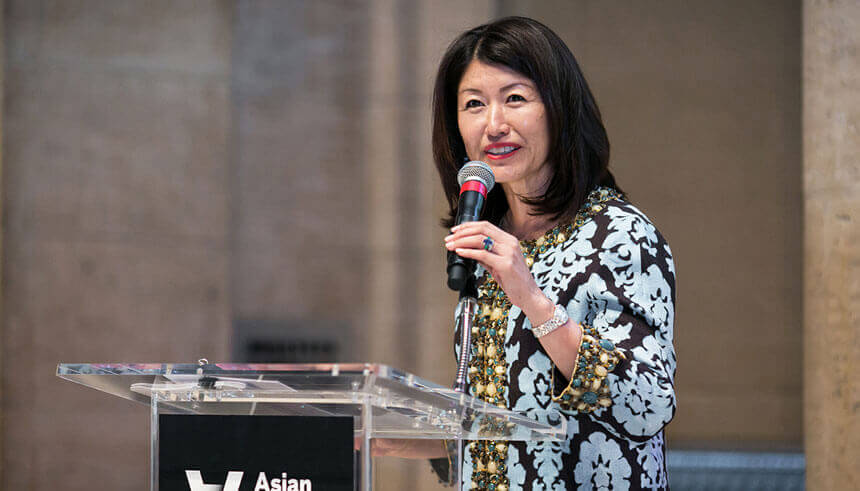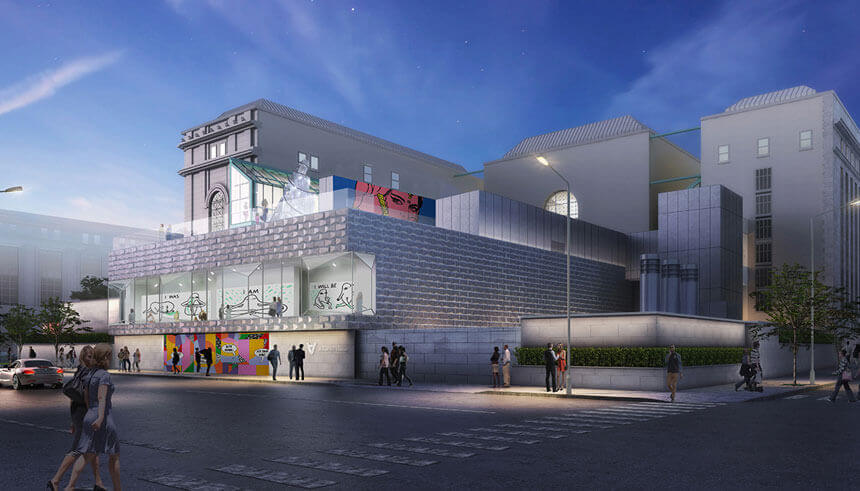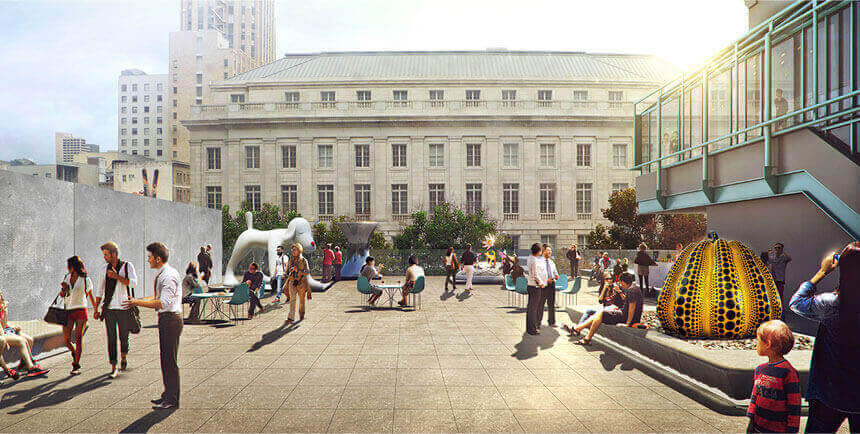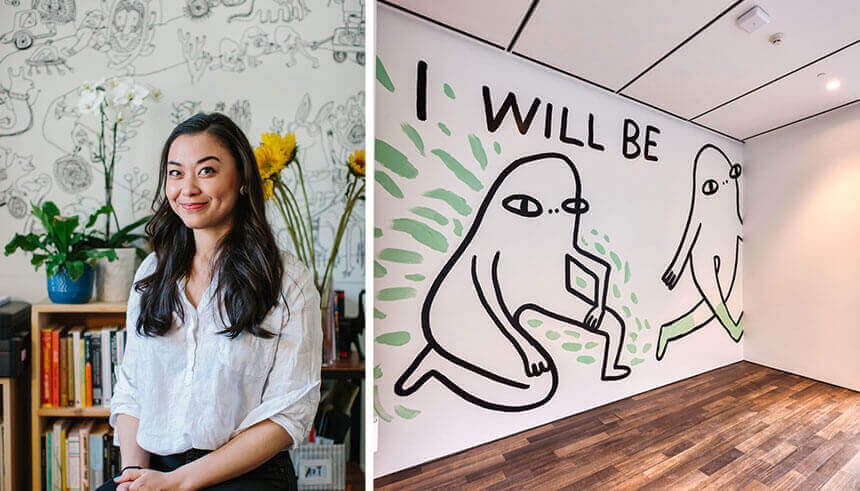Dialogues
Akiko Yamazaki: Making Art More Accessible in the Middle of a Pandemic
By

Akiko Yamazaki talks about the future of the Asian Art Museum, fighting anti-Asian racism with art and her love of horses.
Born and raised in Costa Rica, Akiko Yamazaki is an accomplished philanthropist, equestrienne and wife to Yahoo! co-founder, Jerry Yang. She is also a passionate conservationist, and the co-founder and director of the Wildlife Conservation Network, an organization that works to protect endangered species and has raised close to $170 million for conservation projects around the world since its inception. She also serves on the Advisory Council of the Woods Institute for the Environment, as well as on the Director’s Advisory Board of the Cantor Art Center at Stanford University.
Yamazaki has served as a trustee of the Asian Art Museum of San Francisco for over 20 years and has served as the museum’s board chair for the past six years. She talks with Reach Further about the new East West Bank Art Terrace and the Akiko Yamazaki and Jerry Yang Pavilion, how the Asian Art Museum shifted to digital programming, the importance of contemporary Asian art in the time of COVID-19, her love of horses and her Olympics aspirations.
As the chair of the Asian Art Museum, you led the charge for its transformation. You helped raise over $100 million for a major renovation. So why did you take on a leadership role with the museum?
I've been a trustee of the Asian Art Museum for over 20 years. So, my involvement with the museum has been very long, and I was able to experience its first move from the Golden Gate Park to its current location, which was about 15 years ago. That was the first major transformation of the museum I experienced as a trustee.
Over the next several years, I served on various initiatives including rebranding and strategic planning, which deepened my understanding of the museum’s operations and [gave me] the opportunity to work closely with board leaders and staff members.
I was very honored to serve in a leadership position when we decided that it was time to transform the Asian Art Museum to be a twenty-first century museum, from a regional museum to more of a world-class museum reflecting Asia's position in the world.
How did you guys revamp the Asian Art Museum into an institution that can hold its own against any world-renowned art museum?
This vision was actually something that Jay Xu, our director, started thinking about more than five years ago, and it crystallized around what he calls the four pillars of transformation.
So these four pillars included reimagining the permanent galleries. It focused on 15 masterpieces that the curators had chosen to represent regions in the Asian Art Museum collection. And in centering the reinstallation around the masterpieces, it was not just about moving objects physically, but also about layering in a lot of rich content that the visitor would then be able to take and use for interpreting other objects in the gallery. That was one of the first pillars.

The second pillar was focus and real commitment to contemporary art. The Asian Art Museum of San Francisco has a very strong collection in antiquities. Even though it has done some major contemporary art shows, it had been known more as a museum of amazing, world-class antiquities. With this vision, we really wanted to put contemporary art front and center. So that was the second pillar.
The third pillar was to deploy digital technology throughout, not just in the galleries, but also in the way that the staff worked in the museum and how we presented the museum to the visitors. So, digital technology would be deployed in signage, content presentation, e-shop—reflecting how people use technology today in their daily lives. The shelter-in-place order catapulted our digital programming offerings to the next level!
And the fourth pillar was a physical transformation, which would allow us to stage large-scale exhibitions [that] were not possible before. On the backside of the Asian Art Museum, we had space to construct about a 10,000-square-foot special exhibition gallery, with the East West Bank rooftop Art Terrace. The Art Terrace would be installed with outdoor contemporary art. It will be one of the largest rooftop terraces in the city of San Francisco. This is what we were hoping to unveil this spring. It's been put a little bit on hold, but construction has resumed. It should be ready whenever the orders are lifted, and we're safely able to gather again.
Given that the pandemic has shut down so many institutions, how is the Asian Art Museum continuing to promote Asian art in this time?
I mentioned that our third pillar was deploying digital technology. No force has been as powerful as the current crisis to catapult us towards really having to rethink how we provide digital offerings, as well as deploying technology for the staff members to work together.

In terms of digital programming, I would say that the Asian Art Museum has been really amazing…the sheer number of products and programs that we've been able to offer is really astounding—everything from artists talks, to performances, to the curator-led talks, to workshops. From my understanding, we have been able to produce public programs once a week, and for members, even more. We have also created several original videos since the shutdown by curators, chefs, artists, and we also offer mindfulness videos and meditation videos. I understand that we have a partnership with the San Francisco Zen Center that will become part of our monthly offerings starting this fall, where there will be some meditation sessions that the center will help us provide.
How do you think this digital shift will change the way people consume and relate to art?
We have always provided educational material for K through 12 schools, for example, through online programming, so this is not something that is completely new to us. We have been a good source of information digitally for many, many years. But I think the fact that we're now providing more and more digital programming have helped us gain so much more experience and knowledge about what types of things resonate with people, what makes it easier for them to participate, and what kind of things are they really interested in doing digitally. It has been such a great learning experience for all of us, I think, not just at the Asian Art Museum but also throughout the art world. I think that the art world as a whole has a lot to learn—and we will keep learning together. The digital shift creates a lot easier collaboration across the sector.
Unfortunately, there has been an uptick in anti-Asian racism thanks to the spread of COVID-19. Why is it especially important now to share contemporary Asian art?
It's an unfortunate byproduct of this pandemic that we're seeing an uptick in more racism. One of the first installations in the new Pavilion is a piece by an Asian American artist whose name is Chanel Miller. It's a piece of art that speaks to universal emotions, and it is visible from the street. So, people that are just passing by will be able to see that piece of art and say, “Oh, the Asian Art Museum is also dealing with emotions that are very familiar to me. It’s something that I am experiencing right now, I feel that way.” In that sense, I really hope that we can promote this idea that it's not “us versus them,” that it's only “us.”

Turning to lighter topics, you’re a competitive horseback rider and were supposed to have a horse competing in the Tokyo 2020 Olympics. How did you first discover your love of horses?
My mother was the inspiration for our love of horses, and she attended the Tokyo Olympics in 1964 as a spectator. At that time, she was already riding horses, and she says she was blown away by the quality of the European horses back then. And, you know, fast forward what is more than 50 years now, and here we are—myself still riding horses and my daughters also riding horses. Thanks to a partnership that we've had with a professional rider, Steffen Peters, this would have been our fourth Olympics together with our horse that was pretty much in line to be selected to be part of Team USA.
So, when the shelter-in-place order was put in in March, all the equestrian activities were also shut down. Basically, it became a situation where the Olympic athletes would not be able to attend the qualifying events. And even though our horse and rider had done all the qualifiers in the U.S., they still needed to do quite a few events, including a European tour, which got all canceled. Unfortunately, it is what it is. Our rider had a really good attitude about it and said, “the horse is still young; has one more year to prepare and mature, so it may all still be for the better.” So, we're going with that attitude that we're fortunate enough that we can still vie for it next year, and we keep setting our goals towards that.
With the pandemic, this has been a time of reflection, since a lot of us are sheltering at home. Has there been anything that has stood out for you or piqued your interest?
When we were first ordered to shelter in place, it probably came as a shock, as nobody had really experienced something like this, at least in our generation. And so I think we all were almost in disbelief that our lifestyle had to change so quickly and so drastically.
At the same time, I think once we settled into this new pace, it also was quite eye-opening for us. We weren't zipping around from one place to the other. We actually had time to reflect on things and to spend time as a family. Both Jerry and I started cooking again, which has been a lot of fun. And our daughters partake in the cooking, and they have actually become quite good at cooking, as well, so there have been some benefits to be able to spend so much time together as family.
Subscribe to the Reach Further Newsletter
Get inspiring stories in your inbox every month.

